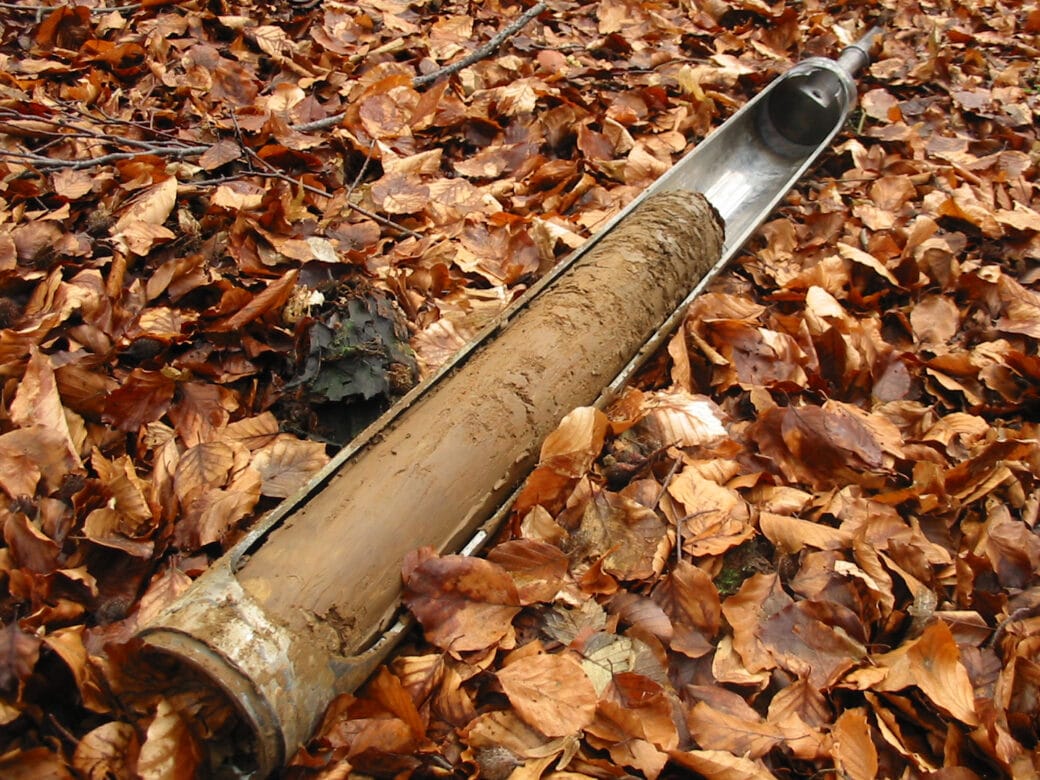#Soil biology & Element cycling #2011 – 2014
Soilomics (Contributing project)
Assessment of structure and function of soil bacterial communties along land use and mangement gradients in the Biodiversity Exploratories

- Analysis of large-scale changes in soil bacterial community composition and diversity associated with different land use and management types.
- Investigation of small-scale biogeographical effects on soil bacterial community composition and diversity (Part of the SCALEMIC experiment).
- Assessment of the influence of tree species on structure, diversity and function of soil microbial communities.
- Identification of differences in microbial key functions typical for the land use and management types or Biodiversity Exploratories.
- Land use and management type have a significant large-scale impact on soil bacterial community composition and diversity by influencing soil properties.
- The overall community composition of soil bacterial communities with respect to the presence of dominant phylogenetic groups are almost unaffected by small-scale biogeographical effects, but the abundance of the different groups will change with respect to the different sampling periods.
- Phylogenetic and functional profiles of soil bacterial communities associated to oak and beech are more similar than those derived from spruce, as oak and beech are deciduous trees and both belong to the family Fagaceae.
- Key functions presenting differential distribution between the different land use types and management types at one exploratory are also relevant within the other exploratories.
- Extraction of total DNA and RNA from selected soil samples.
- Phylogenetic analysis of bacterial communities by bar-coded amplicon pyrosequencing of partial 16S rRNA genes.
- To investigate microbial activities in soil, microbial gene expression is analyzed by a metatranscriptomic approach: enriched mRNA is converted to cDNA which is subsequently subjected to pyrosequencing.
- All pyrosequencing-derived data is analyzed by applying bioinformatical tools. The impacts of land use type, management type, tree species and soil characteristics on structure, diversity and function of soil microbial communities are investigated by statistical analyses.
Kaiser K., Wemheuer B., Korolkow V., Wemheuer F., Nacke H., Schöning I., Schrumpf M., Daniel R. (2016): Driving forces of soil bacterial community structure, diversity, and function in temperate grasslands and forests. Scientific Reports 6:33696. doi:10.1038/srep33696
More information:
doi.org
Kleinräumige Variation mikrobieller Gemeinschaften des Bodens unter Rotbuche und Rotfichte
Nacke H., Goldmann K., Schöning I., Pfeiffer B., Kaiser K., Castillo-Villamizar G. A., Schrumpf M., Buscot F., Daniel R., Wubet T. (2016): Fine spatial scale variation of soil microbial communities under European beech and Norway spruce. Frontiers in Microbiology 7:2067. doi: 10.3389/fmicb.2016.02067
More information:
doi.org
Kaiser K. (2016): Dependence of soil microbial community structure and function on land use types and management regimes. Dissertation, University Göttingen
More information:
ediss.uni-goettingen.de
Der Landnutzungstyp beeinflusst die mikrobielle Gentranskription im Boden
Nacke H., Fischer C., Thürmer A., Meinicke P., Daniel R. (2014): Land Use Type Significantly Affects Microbial Gene Transcription in Soil. Microbial Ecology 67 (4), 919-930. doi: 10.1007/s00248-014-0377-6
More information:
doi.org
Microbial diversity associated to beech -spruce species and characterization of novel bacterial phosphatases from the German exploratories soil metagenomes
Villamizar G. A. C.(2014): Microbial diversity associated to beech -spruce species and characterization of novel bacterial phosphatases from the German exploratories soil metagenomes. Master thesis, University Goettingen
Pallmann P., Schaarschmidt F., Hothorn L. A., Fischer C., Nacke H., Priesnitz K. U., Schork N. J. (2012): Assessing group differences in biodiversity by simultaneously testing a user-defined selection of diversity indices. Molekular Ecology Resources 12 (6), 1068-1078. doi: 10.1111/1755-0998.12004
More information:
doi.org
Identifizierung und Charakterisierung von neuen cellulolytischen und hemicellulolytischen Genen und Enzymen aus deutschen Grünland Bodenmetagenomen
Nacke H., Engelhaupt M., Brady S., Fischer C., Tautzt J., Daniel R. (2012): Identification and characterization of novel cellulolytic and hemicellulolytic genes and enzymes derived from German grassland soil metagenomes. Biotechnology letters 34 (4), 663-675. doi: 10.1007/s10529-011-0830-2
More information:
doi.org
Heiko Nacke (2012): Identification and Characterization of Microbial Key Functions in Soils of the German Biodiversity Exploratories Representing Different Land Use and Management Types. Dissertation, University Goettingen
More information:
ediss.uni-goettingen.de
Functional and phylogenetic analyses of soil microbial communities derived from the German Biodiversity Exploratory Hainich
Kaiser K.(2012): Functional and phylogenetic analyses of soil microbial communities derived from the German Biodiversity Exploratory Hainich. Master thesis, University Goettingen
Identifizierung von neuen lipolytischen Genen und Genfamilien durch Screening metagenomischer Genbibliotheken aus Bodenproben der Deutschen Biodiversitäts-Exploratorien
Nacke H., Will C., Herzog S., Nowka B., Engelhaupt M., Daniel R. (2011) Identification of novel lipolytic genes and gene families by screening of metagenomic libraries derived from soil samples of the German Biodiversity Exploratories. FEMS Microbiology Ecology 78, 188-201. doi: 10.1111/j.1574-6941.2011.01088.x
More information:
doi.org
Beurteilung der Struktur bakterieller Gemeinschaften über verschiedene Bewirtschaftungsformen in deutschen Wald- und Grünland-Böden mittels Pyrosequenzierung
Nacke H, Thürmer A, Wollherr A, Will C, Hodac L, et al. (2011) Pyrosequencing-Based Assessment of Bacterial Community Structure Along Different Management Types in German Forest and Grassland Soils. PLoS ONE 6(2): e17000. doi:10.1371/journal.pone.0017000
More information:
doi.org
Christiane Will (2011): Assessment of the functional diversity of soil microbial communities in the German Biodiversity Exploratories by metagenomics. Thesis, University Goettingen
More information:
ediss.uni-goettingen.de
Will C., Nacke H., Daniel R. (2010): Charakterisierung und Nutzung der bakteriellen Diversität in Bodenmetagenomen. GenomXpress, No. 1/10, 9-12
More information:
www.pflanzenforschung.de
Die horizontspezifische Zusammensetzung der bakteriellen Gemeinschaft in deutschen Grünlandböden wurde mittels Pyrosequenzierung des 16S rRNA Gens analysiert
Will C., Thürmer A., Wollherr A., Nacke H., Herold N., Schrumpf M., Gutknecht J., Wubet T., Buscot F., Daniel R. (2010): Horizon specific bacterial community composition of German grassland soils, as revealed by
pyrosequencing-based analysis of 16S rRNA genes. Applied and Environmental Microbiology 76 (20), 6751-6759. doi: 10.1128/AEM.01063-10
More information:
doi.org
Charakterisierung von aus Bodenmetagenomen isolierten lipolytischen Genen und Genprodukten
Herzog S.(2009): Charakterisierung von aus Bodenmetagenomen isolierten lipolytischen Genen und Genprodukten. Thesis, University Goettingen
Identifizierung und Charakterisierung von Genen für lipolytische Enzyme aus Bodenproben des Nationalparks Hainich
Nowka B.(2009): Identifizierung und Charakterisierung von Genen für lipolytische Enzyme aus Bodenproben des Nationalparks Hainich. Thesis, University Goettingen
Public Datasets
Daniel, Rolf (2018): Bacterial diversity as assessed by Shannon index in top soil collected at six dates in 2011 with respect to AEG31 (SCALEMIC Experiment). Version 2. Biodiversity Exploratories Information System. Dataset. https://www.bexis.uni-jena.de/ddm/data/Showdata/23966?version=2
Daniel, Rolf; Kaiser, Kristin (2016): Bacterial diversity indices based on 16S rRNA gene sequences (V3-V5) 300 EPs. Version 2. Biodiversity Exploratories Information System. Dataset. https://www.bexis.uni-jena.de/ddm/data/Showdata/19706?version=2
Daniel, Rolf; Kaiser, Kristin (2016): Bacterial functional profile (predicted metagenome), 300 EPs. Version 2. Biodiversity Exploratories Information System. Dataset. https://www.bexis.uni-jena.de/ddm/data/Showdata/20346?version=2
Daniel, Rolf; Kaiser, Kristin (2015): Bacterial Abundances based on partial (V3-V5) 16S rRNA genes (300EPs). Version 4. Biodiversity Exploratories Information System. Dataset. https://www.bexis.uni-jena.de/ddm/data/Showdata/19526?version=4
Nacke, Heiko; Daniel, Rolf (2013): Soil bacterial diversity under trees of HEW3 and HEW6 at fine spatial scale, 2012. Version 2. Biodiversity Exploratories Information System. Dataset. https://www.bexis.uni-jena.de/ddm/data/Showdata/16726?version=2
Nacke, Heiko; Daniel, Rolf (2013): Taxonomic analysis of soil metatranscriptomes (VIPs, 2011). Version 2. Biodiversity Exploratories Information System. Dataset. https://www.bexis.uni-jena.de/ddm/data/Showdata/16707?version=2
Nacke, Heiko; Daniel, Rolf (2013): Functional analysis of soil metatranscriptomes (VIPs, 2008). Version 3. Biodiversity Exploratories Information System. Dataset. https://www.bexis.uni-jena.de/ddm/data/Showdata/16706?version=3
Nacke, Heiko; Daniel, Rolf (2010): 16S rRNA gene based analysis, topsoil, jointsampling, Soilomics, ALB, VIPs, 2008. Version 2. Biodiversity Exploratories Information System. Dataset. https://www.bexis.uni-jena.de/ddm/data/Showdata/10564?version=2
Fischer, Christiane; Nacke, Heiko; Daniel, Rolf (2010): Relative Abundance of Bacterial Phyla derieved from 16S Pyrosequencing, Topsoil and Subsoil Hainich Grassland VIPs 2008. Version 2. Biodiversity Exploratories Information System. Dataset. https://www.bexis.uni-jena.de/ddm/data/Showdata/10561?version=2
Fischer, Christiane; Nacke, Heiko; Daniel, Rolf (2010): 16S analysis (pyrosequencing), Hainich grassland VIPs 2008. Version 2. Biodiversity Exploratories Information System. Dataset. https://www.bexis.uni-jena.de/ddm/data/Showdata/10202?version=2
16S rRNA gene (V2-V3 region) based analysis of soil procaryotic community composition, Alb VIPs 2008
Nacke, Heiko; Daniel, Rolf (2009): 16S rRNA gene (V2-V3 region) based analysis of soil procaryotic community composition, Alb VIPs 2008. Version 3. Biodiversity Exploratories Information System. Dataset. https://www.bexis.uni-jena.de/ddm/data/Showdata/5600?version=3
Fischer, Christiane; Nacke, Heiko; Daniel, Rolf (2009): Characteristics of Large Insert Libraries constructed from DNA of Topsoil and Subsoil Samples, Hainich Grassland VIPs 2008. Version 2. Biodiversity Exploratories Information System. Dataset. https://www.bexis.uni-jena.de/ddm/data/Showdata/5304?version=2
Nacke, Heiko; Daniel, Rolf (2009): Characteristics of Large Insert Libraries constructed from DNA of Topsoil and Subsoil Samples, Alb and Schorfheide Grassland VIPs 2008. Version 3. Biodiversity Exploratories Information System. Dataset. https://www.bexis.uni-jena.de/ddm/data/Showdata/5281?version=3
Nacke, Heiko; Daniel, Rolf (2009): Characteristics of Small Insert Libraries constructed from DNA of Topsoil and Subsoil Samples, Alb and Schorfheide Grassland VIPs 2008. Version 2. Biodiversity Exploratories Information System. Dataset. https://www.bexis.uni-jena.de/ddm/data/Showdata/5280?version=2
Fischer, Christiane; Nacke, Heiko; Daniel, Rolf (2009): Characteristics of Small Insert Libraries constructed from DNA of Topsoil and Subsoil Samples, Hainich Grassland VIPs 2008. Version 2. Biodiversity Exploratories Information System. Dataset. https://www.bexis.uni-jena.de/ddm/data/Showdata/5303?version=2
Nacke, Heiko; Daniel, Rolf (2008): DNA Concentrations of Isolations from Topsoil and Subsoil Samples, Alb and Schorfheide Grassland VIPs 2008. Version 2. Biodiversity Exploratories Information System. Dataset. https://www.bexis.uni-jena.de/ddm/data/Showdata/2847?version=2









